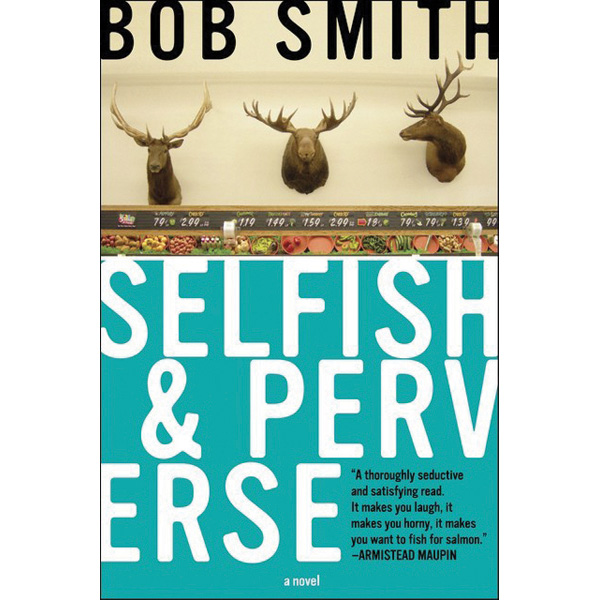“What had me worried was that I was an artsy, thirty-four-year-old man who needed to confront whether I was really talented or just gay.”

By Bob Smith; Da Capo; 376 pages; 2007
Bob Smith’s debut novel, Selfish and Perverse, is about Nelson Kunker, who lives and works in Los Angeles as a writer’s assistant for a show named Aftertaste. He hopes to write novels, and wonders if he’s stagnating: “What had me worried was that I was an artsy, thirty-four-year-old man who needed to confront whether I was really talented or just gay.”
That delicious line speaks volumes for and strikes at our notions of gay productivity. One-liners come easily to Smith, who’s better known as an openly gay comedian. To his credit, witty observations like this don’t stand alone; they’re fully integrated into a taut narrative filled with, for the most part, skillfully drawn characters.
Nelson’s life changes dramatically when Aftertaste hires the charismatic star Dylan Fabizak in an effort to boost ratings. Around the same time, Nelson literally runs into Roy Briggs, an Alaskan fisherman and archaeologist about to head back to his native state. While on a date with Roy, Nelson suffers a public embarrassment by accidentally sinking into the La Brea Tar Pits. The press coverage leaves the nation laughing and him wishing he were elsewhere. When he loses his job soon after, he decides to move to Alaska to see what might come of his literary longings and his relationship with Roy. Dylan, who has his own reasons to go to Alaska, wheedles Nelson and Roy into taking him along.
Selfish and Perverse is mostly about Nelson’s choice between the taciturn Roy and the manipulative Dylan. It’s also about the beautiful and unyielding landscape of Alaska and the characters Nelson meets and knows. The state comes alive through details like the taste of nagoonberries and the rugged boats of the fishermen. The characters include Lloyd, a self-described “fiend for champagne” (you have to read the novel to get the real joke) and Nelson’s father, who’s probably the sweetest straight parent a gay man could want. Eager to help his son with his romantic life, he writes earnestly of the special expertise of straight men who, after all, “ … can be objective about men because we’re never going to date them, but we know all of their devious ways.” And then there’s a pivotal sex scene, a threesome between Nelson, Dylan and Roy. I won’t give too much away; I’ll only write that this scene alone proves why we need queer fiction by queer writers.
What makes the novel less than satisfactory is that it’s vastly overdetermined as a gay love story. As a result, the end is both predictable and predictably written. Smith’s compulsion to write a standard romance narrative also prompts him to resort to a stock character in the shape of Nelson’s fag hag/best friend, Wendy. Despite his attempts to paint her as entertainingly larger than life—six foot three with a “fee-fi-fo-fum personality”—she’s really a watered-down Karen Walker and exists only to move the plot along. When she arrives in Alaska for a visit, it’s to bring news about a possible writing job and this leaves Nelson faced with a choice: return to L.A. with Dylan or stay in Alaska. Although Smith’s considerable talents are wasted on a standard love story, this is a promising debut and bodes well for an original, inventive and very funny writer.